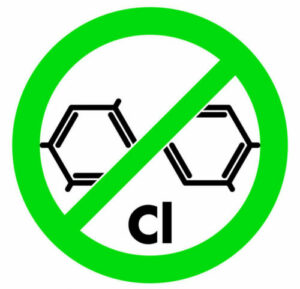
Washington legislature strikes down common paint pigment elimination bill
By onLegal
A bill that would have barred the use of chlorine-based pigments and paints by collision repair shops and other industries in Washington state has been substituted with legislation, and unanimously approved by the Senate and House, which removed that direct hit to business.
SB 5369, as written last week, would have eliminated the manufacture, sale, and distribution of any paint and ink that contains chlorine-based pigments beginning Jan. 1, 2025 in the State of Washington. That would’ve meant collision repair shops in the state would’ve been directly impacted by not having access to the paints and materials they needed, according to paint, coatings, and auto body associations.
The Color Pigments Manufacturers Association (CPMA), and other coatings, paint, and ink business associations in the state are calling it a win.
“CPMA facilitated a coalition comprised of downstream customer industry associations to encourage their communication with legislative sponsors regarding adverse economic impacts of SB 5369 to Washington State businesses,” said CPMA Executive Director David Wawer. “The coalition was comprised of industries that must use printing inks and paints and coatings for their products and services. The coalition included companies that had a physical presence in Washington State, and otherwise would be harmed economically if the broader version of SB 5369 was approved by the state legislature.”
For the auto body industry and its suppliers to be most directly affected, the inclusion of the pigment titanium dioxide — a necessary component in vehicle paint — would have had the biggest impact, Wawer said.
The American Coatings Association (ACA) spoke out against the bill in February noting, “studies indicate that paint is not a major contributor to PCB contamination” and “most paints do not contain PCBs.”
“As noted in the hearing in the Senate Environment, Energy and Technology Committee, a study by Ecology indicates main contributors to non-legacy PCB contamination are yellow foam, sidewalk chalk and breakfast cereal containing a yellow dye at issue,” ACA wrote in its letter to the Senate Ways and Means Committee. “A study by the Spokane River Task Force also indicates electrical equipment, fish feed, paper products and lubricants. These potentially significant contributors are not at issue in SB 5369. ACA believes the bill should require a study to identify products that significantly contribute to PCB contamination instead of targeting products with little to no impact on PCB contamination.”
Last week, ACA told Repairer Driven News the bill could “reduce access to certain types of paints used by the collision repair industry,” ACA said, but without knowing the specific language of the bill and amendments being considered, the association couldn’t gauge specifics at that time. ACA didn’t respond to RDN’s request for comment by publication deadline after the bill was passed by the legislature.
“The scope of paints withdrawn from the market could be broad, depending on the bill’s language. Restrictions are also unlikely to reduce levels of PCBs in waterways since some pigments contain trace amounts that have not been shown to contribute significantly to PCB contamination, especially in comparison to other products, as described in the written comments submitted in February.”
The original bill didn’t include any prohibitions on chlorine-based paints, pigments, and inks. It sought to have the Washington Department of Ecology petition the U.S. Environmental Protection Agency (EPA) to reassess the legal amount of polychlorinated biphenyls (PCBs) allowed under the Toxic Substances Control Act. The purpose of having the EPA do that would be to establish restrictions on the use of PCBs that were previously considered inadvertent in consumer products under its authority provided by the pollution prevention for healthy people and Puget Sound Act.
The version of SB 5369 that passed, which was an amendment brought in the House, includes the petition requirement to be completed by Jan. 1, 2025, specifically, “to reassess its regulations on excluded manufacturing processes from prohibitions on manufacturing, processing, distribution in commerce, and use of PCBs and PCB items under 40 C.F.R. Sec. 761.3 for the purpose of eliminating or reducing the presence of PCBs in consumer products.”
“The legislature finds that nonlegacy PCB contamination may most effectively be managed upstream at the product and process source as opposed to downstream facilities at the end of the product life cycle,” the bill reads. “The toxic substances control act standard for inadvertent PCBs does not reflect current science on limits needed to protect human health and the environment and is overdue for revision.”
House Speaker Rep. Laurie Jenkins (D-District 27) signed the bill on April 23 and it was sent to Gov. Jay Inslee on April 24.
Wawer said CPMA will continue monitoring the activities of the state’s Department of Ecology related to the petition requirement in the bill.
Images
Featured image credit: Lubo Ivanko/iStock
